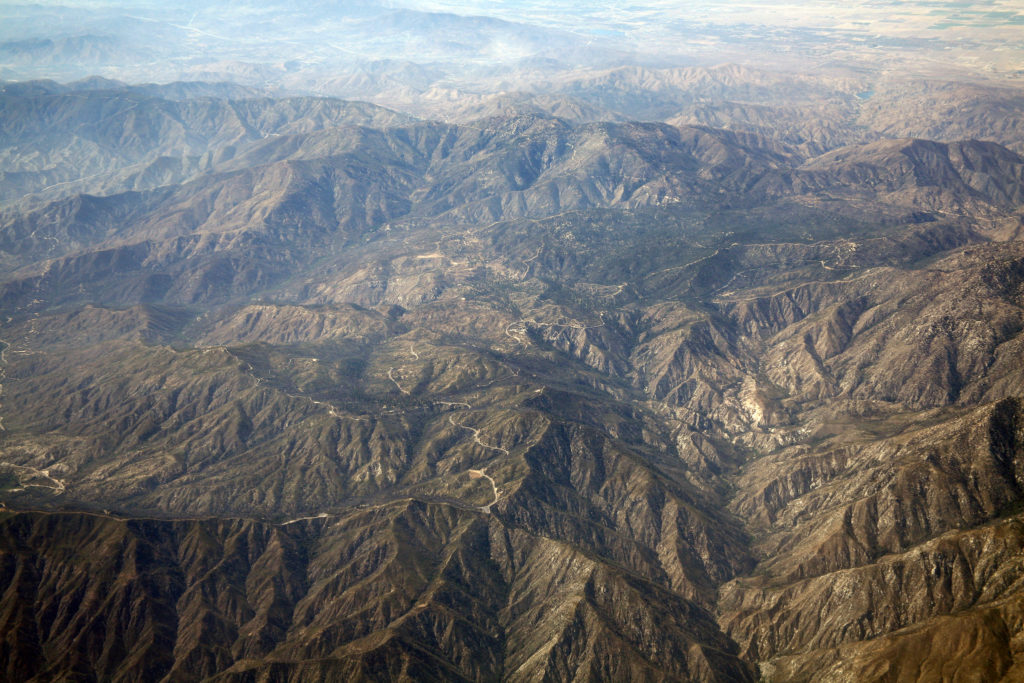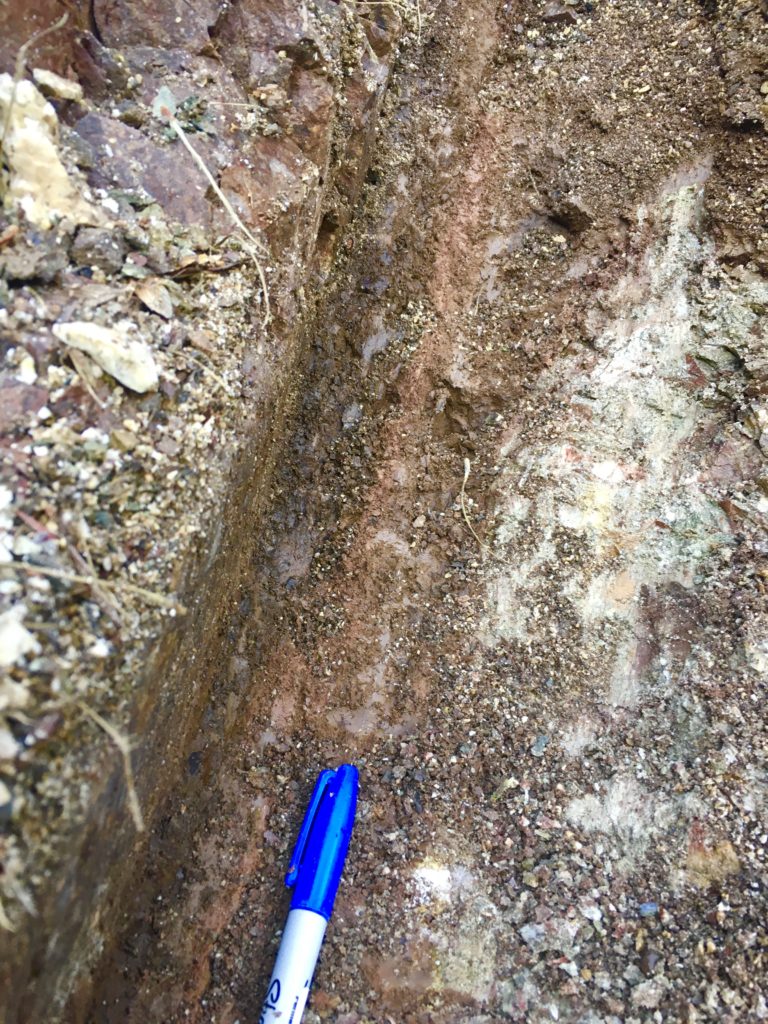
The Punchbowl fault, an inactive "paleo-San Andreas fault," is nestled in the San Andreas mountains. In a new study, scientists use resistant zircon mineral grains to take the temperature of the fault, identifying ancient earthquakes and estimating how much energy was release in the rupture. Credit: Doc Searles

When a fault ruptures, the most intense damage can be confined to a narrow strip of rock just a few centimeters wide, as seen in the Punchbowl fault here. Credit: Alexis Ault
The researchers used tiny samples of damaged fault rocks, called fault gouge, from within a two- to 10-centimeter band at the heart of the fault's deformation, as well as the 10 centimeters surrounding it. To estimate the earthquake's temperatures during the fault's last rupture, the team analyzed zircons, which are resilient minerals that can withstand the intense conditions of an earthquake. By measuring how much helium was left in the fault's zircon crystals, they estimated the fault reached temperatures around 700 degrees Celsius in the past, which could indicate large-magnitude earthquakes.
The zircon-based temperature range overlaps with previous estimates based on organic material, around 450 to 1050 degrees Celsius, but also refines previous estimates of earthquake temperatures. This suggests that if one method is not available for taking an earthquake's temperature, scientists could apply the other. The researchers also found that temperature varied along the fault, correlating with the width of that narrow band of intensely deformed rock.
"We theoretically predicted this, but it's not commonly observed in real datasets," said Ault. "So to show that and support prior work was exciting."
Armstrong and Ault are eager to try this new earthquake-thermometer method on other important faults and aim to incorporate other data to further hone estimates for ancient quakes' temperatures and magnitude.
"Zircon thermochronometry is a classic tool that we can use in new ways to identify what could have been a catastrophic event in the geologic past that is otherwise cryptic today," said Armstrong.






